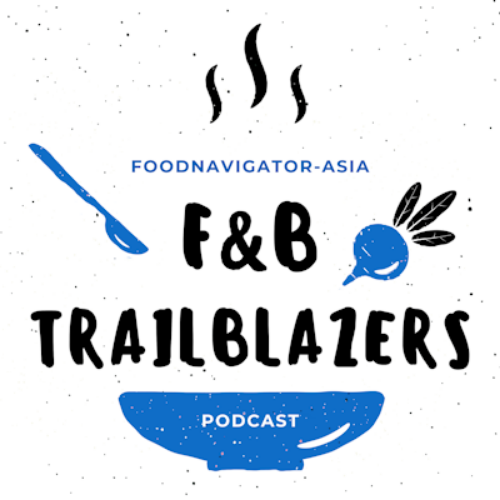‘Matchless versatility’: Why palm oil’s widespread prevalence in Asian food industry makes it irreplaceable for now

Despite its poor reputation in the west due to sustainability concerns, palm oil is one of the most common food products used in the APAC F&B industry, penetrating almost every possible sector from bakery to snacks to beverages.
According to edible oils brand Mewah, at present the use of palm oil is extremely widespread both geographically and in terms of applications, so much so that completely replacing it at this juncture would be a near-impossible attempt.
“Palm oil is currently consumed by over three billion people in some 150 countries [and] virtually every sector within the Asian food industry is using some fraction of palm oil to make their products,” Mewah R&D Solutions R&D Leader Dr Prakash Adhikari told the floor in his Palm Oil Functionality and Versatility in Finished Food Products webinar organized by the Malaysian Palm Oil Council (MPOC).
“One of the reasons palm oil is so widely used is due to its composition of 50% saturated and 50% unsaturated fat, which is unique to palm oil and provides it with unique properties allowing it extremely high versatility to be used in many different types of products, which other oils like sunflower or soybean cannot do.
“This composition gives palm oil properties such as high oxidation stability, and also reduces the need for extra processing which would induce trans fats content, making it trans fat free.
“Importantly, it also allows for a wide variety of modifications to be made to palm oil - such as fractionation, as this yields many different palm oil product types that can be used for different applications, e.g. certain fractions are used to make chocolate, others in bakery, others in cooking and frying and so on.”
Dr Adhikari added that the fractionation of palm oil can yield over 10 different products, most of which can be used for different food applications, and it would be difficult to find a single replacement that can replicate all of these functions.
“I am not saying that only palm oil can be used to produce these products, of course, [but] currently palm oil is being used for so many applications due to its unique versatility – and in nature, there are very limited, if any, oils which possess these sorts features to allow for all these applications,” he said.
“At present, over 50% of packaged food products in supermarkets are made using palm oil [and coupled with] its globally competitive pricing, it is one of the most globally used commodities [and replacing it would be difficult].”
That said, there are many food companies especially in the west which are attempting to do just that, though with limited applications at a time, with ‘Palm Oil Free’ or ‘No Palm Oil’ labelling becoming a prominent trend for products in some markets, a phenomenon that the MPOC is trying to initiate action against.
One example is Australian chocolate brand Darrell Lea which announced that it had become the ‘first homegrown chocolate brand to go 100% palm oil free’ by replacing palm oil with sunflower oil, whereas and even big brands such as Cadbury have bowed to consumer pressure in some countries like New Zealand and removed palm oil from their chocolates. Palm oil is still being used in products made in Asian countries such as Indonesia or Malaysia.
Solutions beyond a boycott
Speaking at the same event, Malaysian Palm Oil Board (MPOB) Head of Analytical and Quality Development Unit Dr Azmil Haizam Ahmad Tarmizi added that due to the widespread use of palm oil, there needs to be better solutions to handling issues that governments such as the EU are fearing, such as food safety concerns - as opposed to boycotts or completely stopping the use of palm oil.
“Food safety is extremely important to the Malaysian palm oil industry as 89% of our palm oil is exported and 85% is used in food applications, so we take this very seriously,” he said.
“We are aware that in recent years, one of the chief concerns particularly in the EU regarding palm oil has been about its 3-MCPD esters content [and] we have been taking steps to overcome this.
“The Malaysian government has granted some RM50mn (US$12mn) to the industry to analyse the issue and perform trials to mitigate 3-MCPD, and after researching, we found a strong correlation between the levels of chloride (due to contamination) and 3-MCPD in the palm oil.
As a result, MPOB has cautioned mills and refineries to reduce or remove the use of any chlorinated bleach, and also implemented a palm oil ‘washing’ step in refineries to remove chloride.
“Implementation of the ‘washing’ has driven chloride levels down from 7ppm to 1.3ppm after washing, which corresponded in a drop of 3-MCPD levels from 2.61ppm before washing to 0.85ppm after washing,” said Dr Azmil.
“That’s a 81.2% drop in chloride content and 67.4% reduction in 3-MCPD levels. Importantly, current EU food safety guidelines place 3-MCPD limits for seed oils at 1.25 parts per million (ppm) and for other vegetable oils at 2.5ppm, so this would place palm oil below this limit.
“Of course, if palm oil mills have the capacity to do quality assurance such that their crude palm oil contains no chloride, then this washing step can be omitted, but at present it is what works.”
He also stressed that in their research, MPOB has also found that high 3-MCPD levels are also found in other oils such as olive oil, walnut oil and peanut oil, ‘so it is not just palm oil that needs to improve on this’.

















